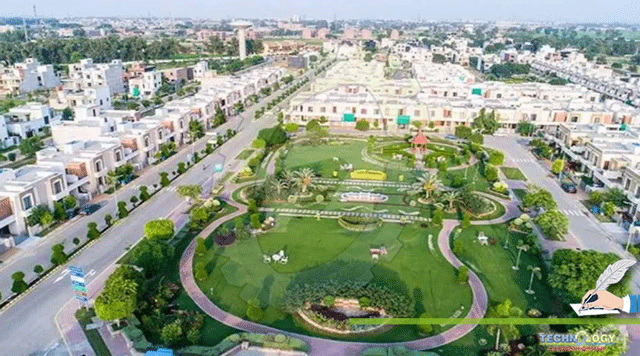The ‘city of Gardens’ becomes the populated city on the planet. Last month Lahore continuously topped the catalogue of most populated cities around the globe. Condition is similar in other cities of Punjab, as it is most crowded province of country.

The New York Times marked Lahore as one of the best cities to visit in 2021 as it is enriched with culture, history and hospitality. However, pollution has made it world’s most dangerous city. The city shrouded in smog as pollution and cold weather conditions amalgamate. Air population is slowly deepening foots in Lahore and situation in city is alarming, as city is inhabitant of 13,095,000 people (2nd largest city of country). Why Lahore turned to polluted city? In recent years city witnessed massive decline in number of Trees. Trees reduce pollution by producing oxygen, cleaning the air, reducing climate change, conserving water, preserving soil. Trees absorb carbon dioxide and create oxygen during the photosynthesis process. According to the United States Department of Agriculture “One acre of forest absorbs six tons of carbon dioxide and emits four tons of oxygen,”. This is enough to cover the requirements of 18 individuals for a year. And what we did? Chopped off trees to build infrastructure, Metros, under and overpasses, housing societies etc. Secondly Transportation emissions contribute to air pollution, which has a high mortality toll. According to the data collected by the Motor Registration Authority in 2020, there are a total of about 6.2 million vehicles in Lahore alone. There are as many as 4.2 million motorcycles in Lahore. You can gauge the sheer number of vehicles in Lahore by comparing the number of vehicles in Lahore with the 19.6 million vehicles in the entire province of Punjab. This shows that Lahore has around 32% of vehicles in Punjab. So these iron boxes are contributing in polluting air.
Polluted air causes severe health problems, like asthma, lung damage, bronchial infections, strokes, heart problems, and reduces life expectancy. And according to the Global Alliance on Health and Pollution, an estimated 128,000 Pakistanis die annually from air pollution-related illnesses. Air pollution is responsible for one out of every ten fatalities in children under the age of five in Pakistan.
So what government is doing to curb this silent killer? Many officials and politician are playing typical blame games without taking solid measure to rescue citizens from crisis. Back in 2019, Minister for climate change, notoriously labeled the air situation in Lahore as a conspiracy plot to propagate disinformation.
Lahore, like the rest of Pakistan, severely needs to reduce its dependency on fossil fuels. This would help clean up both the transportation and energy production sectors simultaneously time. Due to the price volatility of fossil fuels and the lowering cost of renewables, the National Electric Power Regulatory Authority stated last year that feasible solutions for supplying the country’s energy demands through more sustainable sources were required. Pakistani Prime Minister Imran Khan has also set a lofty goal of generating 30% of Pakistan’s energy needs from renewable sources by 2030. It will be difficult to meet this goal. The marketing of fossil fuels and the transmission infrastructure that they need is backed by powerful interests.
In Lahore, decision-makers rely on band-aid remedies, such as closing workplaces and schools on extremely polluted days to decrease human exposure and traffic emissions. Farmers that burn stubble is likewise subject to sanctions, as are brick kilns. Punitive measures against softer targets will remain ineffectual if other big causes of air pollution are not addressed.
To address its environmental challenges, particularly air pollution, Lahore requires a comprehensive and integrated strategy, which in turn implies smarter urban design. Regularizing urban slums that lack any type of waste management might aid in the elimination of undesirable habits like garbage burning, for example. Energy usage and vehicle emissions may both be reduced with better urban management. Instead, expansion into nearby agricultural regions to establish gated communities is rampant, with no regard for the massive environmental stress produced by uncontrolled urban growth.
Lahore, formerly renowned as the “city of gardens,” is painfully suffocating on hazardous air due to a lack of comprehensive and systematic measures to tackle air pollution. Rather of looking forward to the much-needed respite of the winter months, Lahore’s 13 million citizens have to experience another episode of smog.s